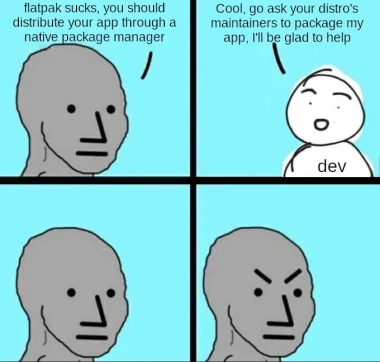Flatpak haters seem to believe that if an app isn't on their distro's repos, it's the developers' fault.

There have been multiple accounts created with the sole purpose of posting advertisement posts or replies containing unsolicited advertising.
Accounts which solely post advertisements, or persistently post them may be terminated.